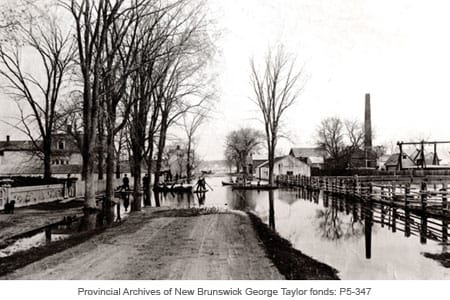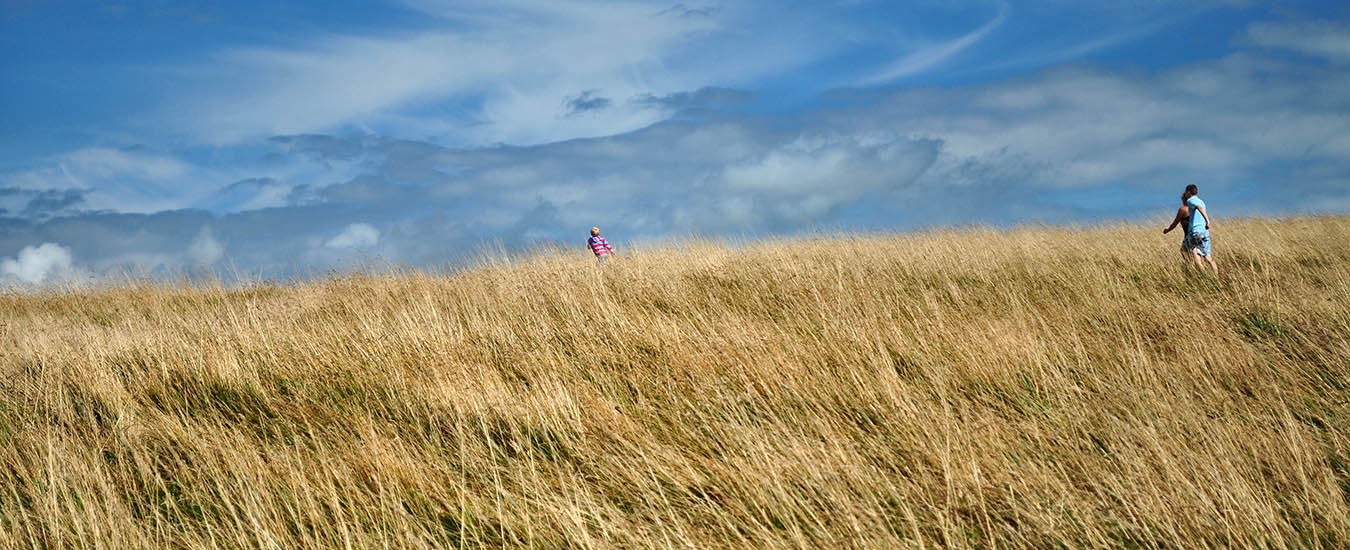Paddling the streets of Fredericton and other misadventures during the annual spring freshet.
When the Mactaquac Dam, a hydro project just north of Fredericton, closed its gates in November 1966, it was touted as a flood-control structure-at least for the first few years. The spring flood or "freshet" seven years later reminded area residents that the St. John River-with upwards of 400,000 cubic feet of water per second under full flow-is an element of untamed nature.
A freshet is a sudden rise in a river or stream brought about by the rapid melt of snow, by heavy rainfall or by an ice jam-or all of the above. They have been part of the cultural life of New Brunswick for generations. River drivers of old welcomed this shot of water to move a hung log drive. Young boys enjoyed floating about on errant planks in flooded lumber yards. More recently (within the past decade) an annual "freshet party" has been hosted by resident Norval Balch at his home at French Lake. Usually in mid May, the event is timed to occur at the interval when the waters are receding and before biting insects make things unpleasant.
Many folks recall the freshet of 1973, which did a bit of damage around Fredericton and Maugerville, and didn't go unnoticed on Kennebecasis and other southern New Brunswick rivers. I remember spending a Sunday afternoon in late April at the legislative library in downtown Fredericton, as part of a brigade moving books to safety from the first floor, about to be flooded.

Other freshets in time include a "big one" in 1958. A scrapbook put together by a Mr. Hoben in Upper Gagetown-and housed in the archives of the New Brunswick Museum-chronicles the loss of his neighbour's woodshed and its contents. Oh what a feeling! In 1936, an ice jam raised the river level so high that canoes and other small craft became the vehicle of choice around the streets of Fredericton, and the legislative assembly was within inches of being flooded. The historic water level is engraved on the steps of this venerable building.
Although there's been missing watercraft and firewood, and other relatively minor traumas, there has been no known loss of life resulting from spring freshets. This is testimony to the instinctive common sense of New Brunswickers not to challenge nature any more than necessary, as well as preparedness by agencies such as the New Brunswick Emergency Measures Organization (EMO). In 1994 EMO officially established the River Watch program, to measure snow and ice at stations along the St. John. This data is overlaid with weather patterns to determine the potential for flooding, which is shared with the public as appropriate.
During the freshet season naturalists' clubs in Fredericton, Saint John and Moncton offer bird observation trips. Besides mint full-plumaged ducks, there are waders, shorebirds, eagles, ospreys and a host of returning warblers, swallows, flycatchers, thrushes and sparrows. Waterfowl, particularly ducks, have adapted well to changing water levels.
Wildlife tolerates, sometimes suffers and occasionally benefits from the excess water of the freshet. The moose has a natural affection for water, but too much, too quickly and too cold (remember it may be water from melting ice!) can give already stressed young animals a challenge they can't accommodate. Deer, being more hyper, can get into trouble with fences or be forced out of woods to the edges of well-travelled highways. For others, such as muskrats and beavers, an increase in the water level gives them a ticket for unimpeded travel. Fish are stimulated to move with the freshet-great schools of gaspereau and shad migrate upriver to spawn with rising waters.
The New Brunswick Botany Club also gets in on the freshet act, offering flora walks exploring the unique and diverse flora native to the flood plain. Two plants tied to the freshet phenomena are the famous and edible large fern, otherwise known as the fiddlehead, and a member of the mustard family, the so-called cuckoo flower. (The traditional spring feast-including river-caught baked shad-begins with the fiddleheads.) The evolution of the cuckoo flower has produced very light, small seeds that float easily, and big patches of the plant's white blooms mark the extent of the freshet. Many other native plants, such as the virgin's bower, hog peanut and wild cucumber, grow in the flood plains. The flood plain soils are largely of freshet origin-and the rich farmland of Maugerville, Sheffield and Jemseg are testimony to the annual deposit of pale brown silt, enriched with calcium and other elements.
Ice jams on the upper St. John River regularly cause problems at Perth-Andover, however, and sometimes at Welsford and Sussex. But with the River Watch Program officially entrenched, and better control at the Mactaquac, at least predictions are more accurate.
You might miss the return of the robins, but you won't miss the rising waters during the annual freshet, particularly if you reside in the St. John basin. The last big one was in 1994. But with the right combination of rain, ice and melted snow, the next big freshet is coming-it's just a matter of time.
